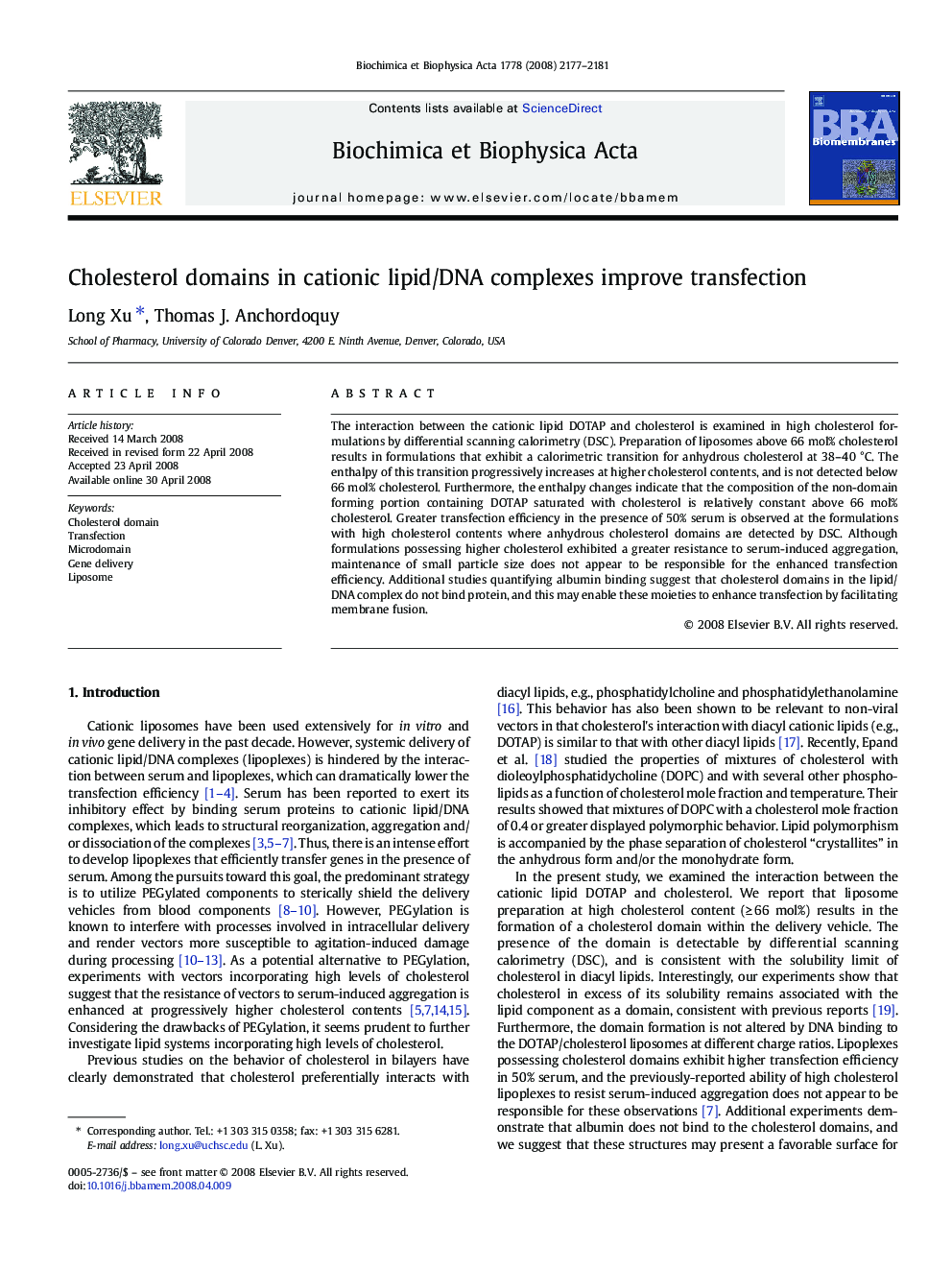| Article ID | Journal | Published Year | Pages | File Type |
|---|---|---|---|---|
| 1945455 | Biochimica et Biophysica Acta (BBA) - Biomembranes | 2008 | 5 Pages |
The interaction between the cationic lipid DOTAP and cholesterol is examined in high cholesterol formulations by differential scanning calorimetry (DSC). Preparation of liposomes above 66 mol% cholesterol results in formulations that exhibit a calorimetric transition for anhydrous cholesterol at 38–40 °C. The enthalpy of this transition progressively increases at higher cholesterol contents, and is not detected below 66 mol% cholesterol. Furthermore, the enthalpy changes indicate that the composition of the non-domain forming portion containing DOTAP saturated with cholesterol is relatively constant above 66 mol% cholesterol. Greater transfection efficiency in the presence of 50% serum is observed at the formulations with high cholesterol contents where anhydrous cholesterol domains are detected by DSC. Although formulations possessing higher cholesterol exhibited a greater resistance to serum-induced aggregation, maintenance of small particle size does not appear to be responsible for the enhanced transfection efficiency. Additional studies quantifying albumin binding suggest that cholesterol domains in the lipid/DNA complex do not bind protein, and this may enable these moieties to enhance transfection by facilitating membrane fusion.
